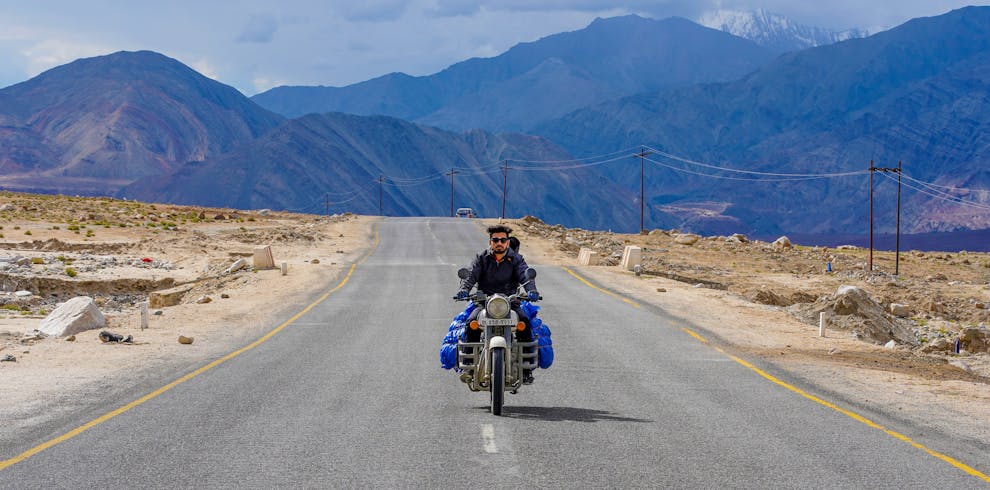- 2
- 1
- 1
- 4
- 4
- 1
- 3
- 2
- 2
- 4
Ladakh
Ladakh is a region in India totally isolated from the modern world. An authentic land, it is faithful to ancestral customs where life is characterized by intense spirituality. Even an Indian traveler will probably find no similarities in the land and people between the ones he leaves behind and those he encounters in Ladakh. Rich traditions of Mahayana Buddhism still flourish in the purest form in this region, which has often been referred to as Little Tibet.
Ladakh lies at an altitude from 9000 ft to 25170 feet. At these heights, you are on the roof of the world! As the highest inhabited land in the world, it holds a fascination for many, while for some there is an enchantment of seeing mountains which had been under the sea for million of years. Ladakh is like a forgotten moment in time. It is common in Ladakh to come across villages carved out of veritable mountainside, stupas reaching the sky, monasteries virtually hanging from the cliffs and crags. Their interiors are filled with priceless antiques and art.
As the first rays of the sun hit the mountains, the monks blow the large copper trumpets from the rooftops of the monasteries. Below the monasteries, ritual articles are laid out, as monks in vestments and masks get ready for dancing in front of a gathering. As events build up, the music gets louder, incense is brought out and a group of monks in ceremonial dress come out to unfurl the large painted scroll. The night is alive with the illumination of shrines and buildings. A typical monastic festival in Ladakh takes place.
Ladakh means “land of high passes”. Until the coming of the aircraft, the only access into this remote, high Trans-Himalayan kingdom was across several high pass crossings. From the west the Zoji La at 14,000 feet is the lowest. Taglang La to the southeast is 17,200 feet high and a military highway now crosses this coming from Manali. To the north is the Khardung La – at 18,200 feet, the only access into the Nubra valley and the Karakorams. Dead ends now, but important in centuries past, were the northern passes on the Central Asian trade route – Saser La and the Karakorum pass.
Ladakh’s landscape has more in common with the lunar landscape than any other place on earth. Being in a complete rain-shadow region, cut off from the monsoon clouds by the Great Himalayas and a host of subsidiary ranges, it is a cold high altitude desert where the wind, water from the minimal winter snows, and chemical reactions within the rocks themselves, have carved a fantastic, sometimes grotesque, landscape

- Jan
- Feb
- Mar
- Apr
- May
- Jun
- Jul
- Aug
- Sep
- Oct
- Nov
- Dec